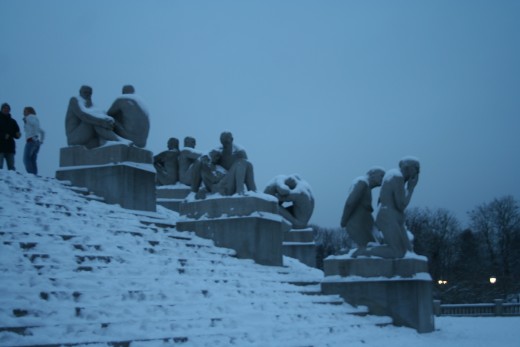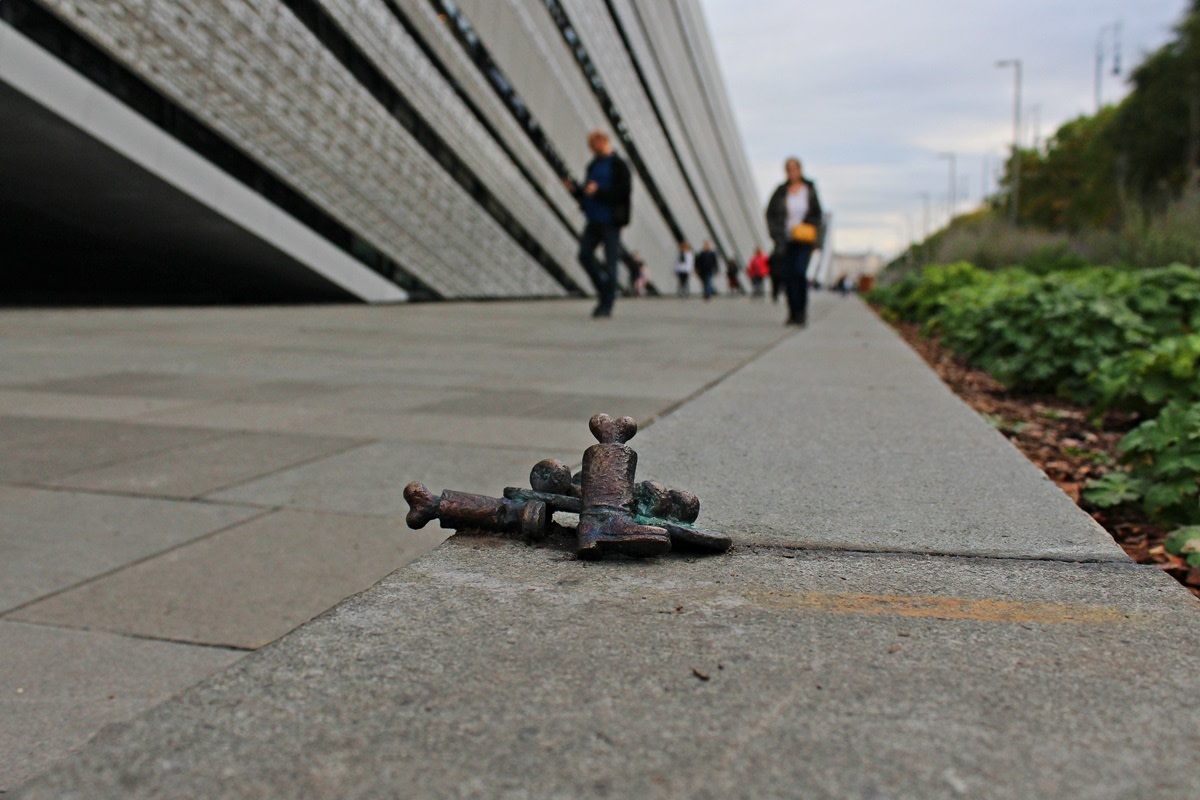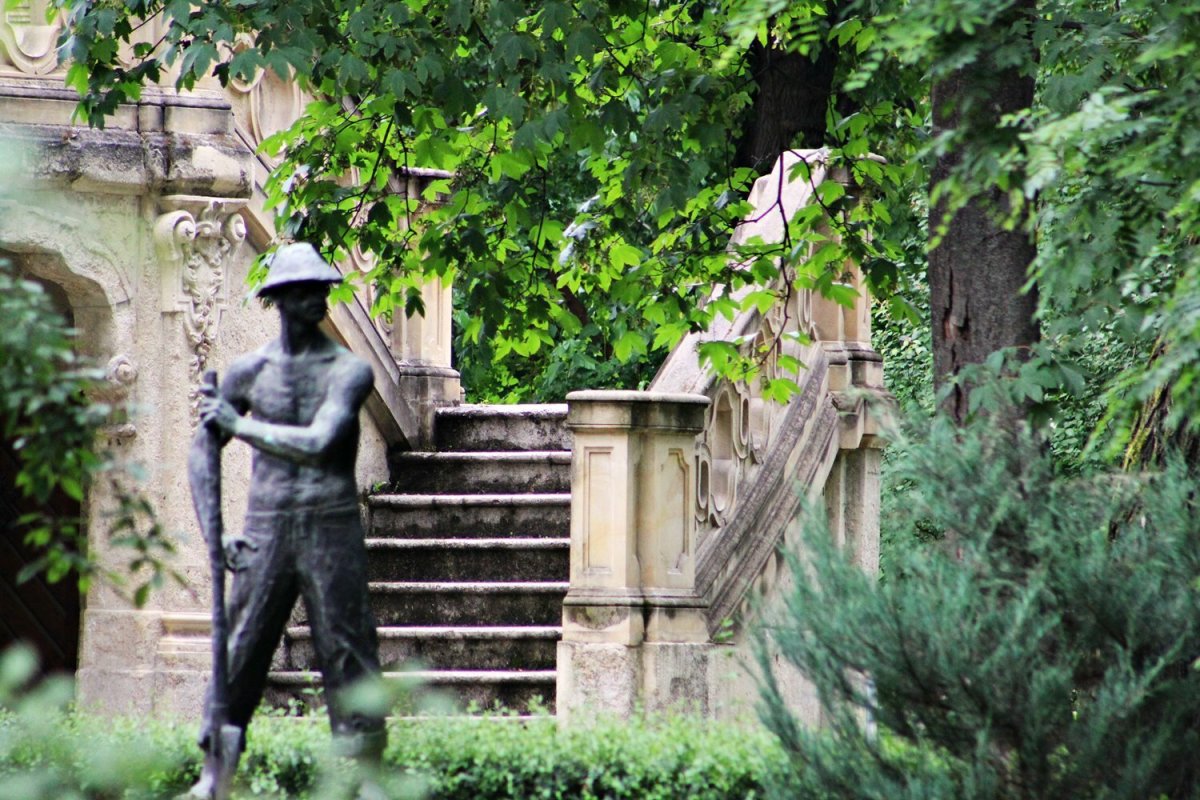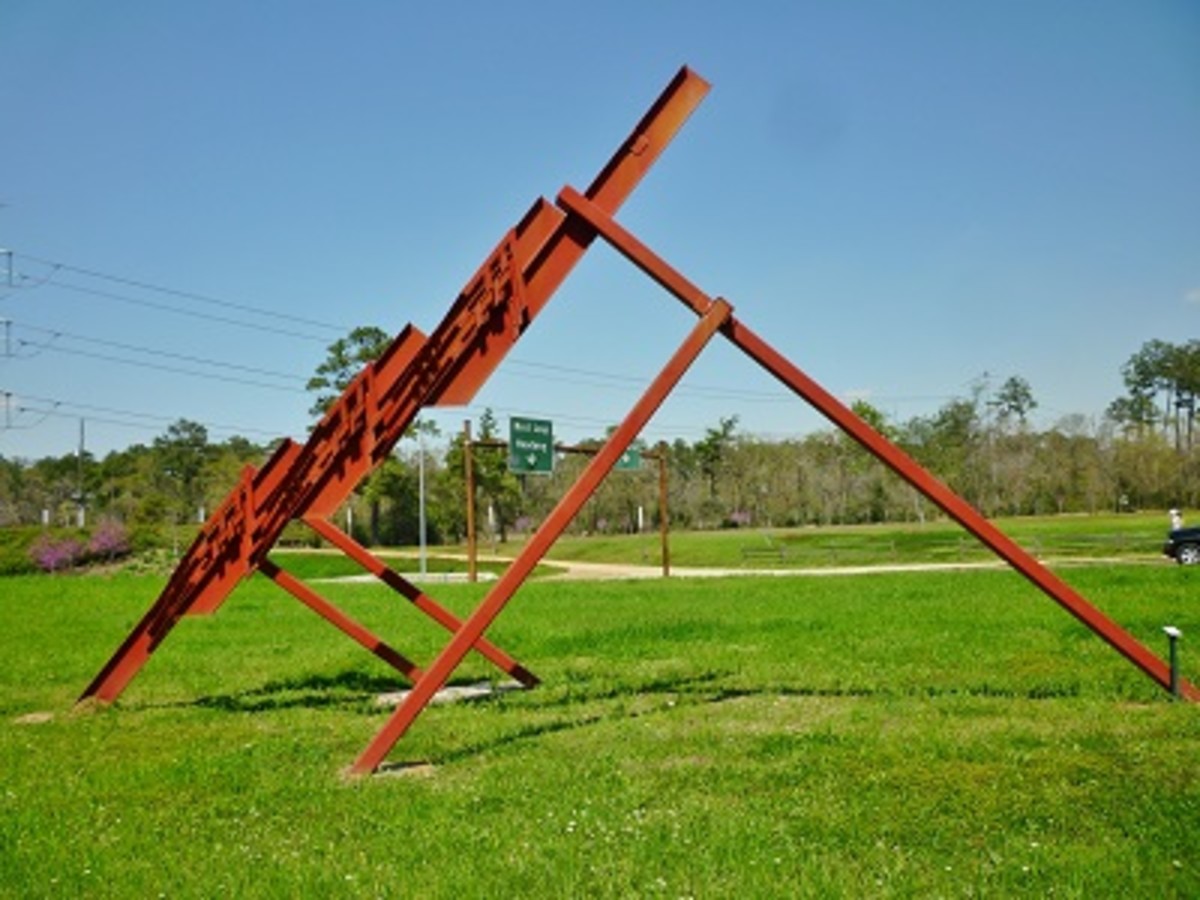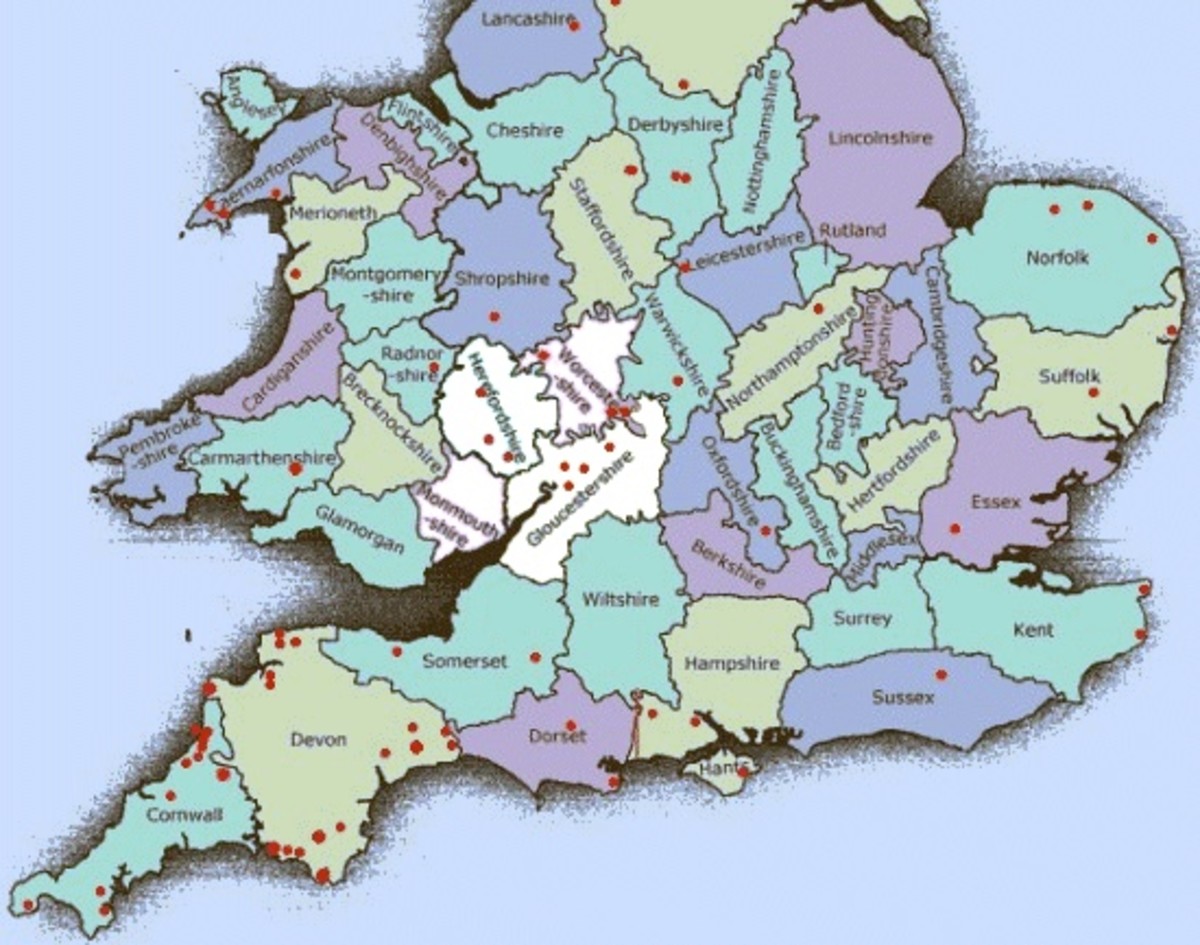Talk about a naked city; try Oslo
Twilight was descending as we approached the massive graceful gates of the Sculpture Park. While I would like to visit again in full daylight, we stepped through the gate into a snowy expanse of park filled with visitors in the gathering dusk.
Strollers shared the wide walkway with cross-country skiers and children in the playground ran through freshly fallen snow in Oslo's most popular tourist site, the extraordinary Vigeland Sculpture Park www.gonorway.no/norway/sidevisning.php?id=150), with more than 600 life-size figures sculpted by one man, Gustav Vigeland.
Ten minutes from the center of Oslo, the park within the larger Frogner Park, comprises 80 acres. Vigeland created each of the 212 full-size sculptures and planned their placement within the park. Statues arranged singly, in pairs or in groups with five distinct settings.
Passing through the doors within the massive and ornate granite and wrought iron entrance gates, visitors enter a serene vista. The statues are aligned along and beside a lane that stretches to a hill topped with additional statues at the far end of the park.

Vigeland Sculpture Garden
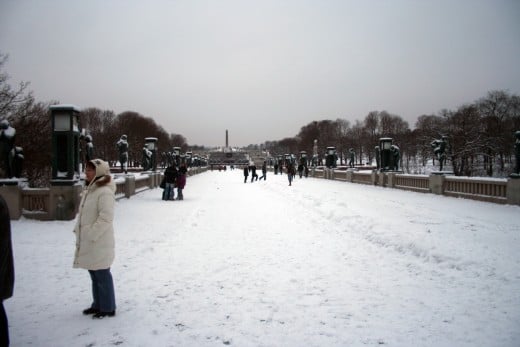
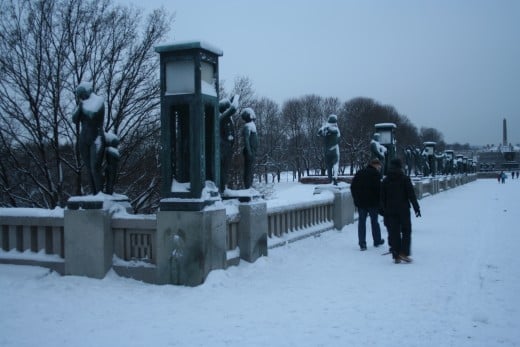
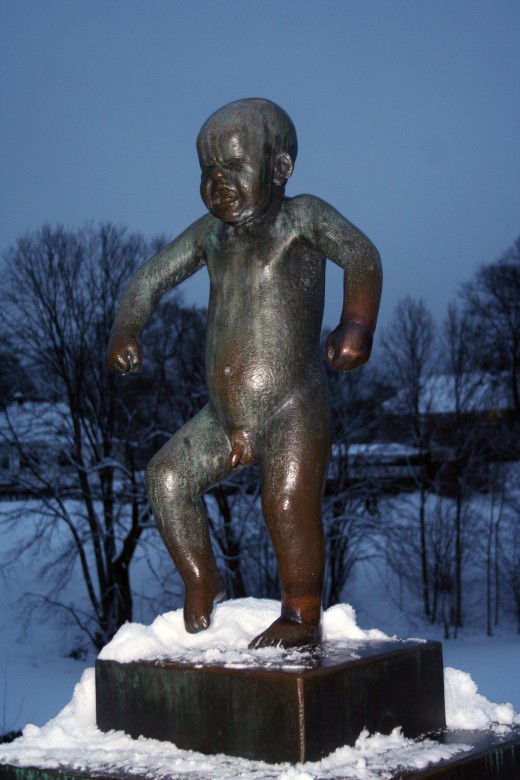
Vigeland Sculpture
The snow added dimension and a unique perspective to the naked figures, and the lights created a soft, cozy atmosphere, even as our senses sharpened to keep us upright on the slippery steps leading to the 46-foot monolith, which includes 121 figures. The bridge and the fountain are separate focal points.
Lighting in the park is a separate artistic element, the lanterns more esthetic than functional.
The first and oldest major element is the 1940 bridge, nearly 50 feet wide. The 58 statues, including one of the most popular statues, "the Angry Little Boy," along its 328 foot length demonstrate human relationships and emotions.
Below the bridge eight children's statues romp in a playground, around the central statue of an unborn child.
Cross country skiers shushed past us as we stopped to admire Vigeland's view of the human condition.
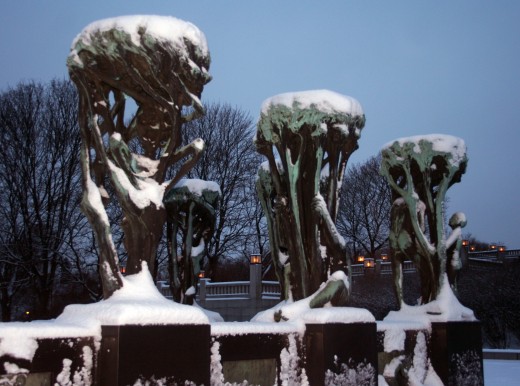
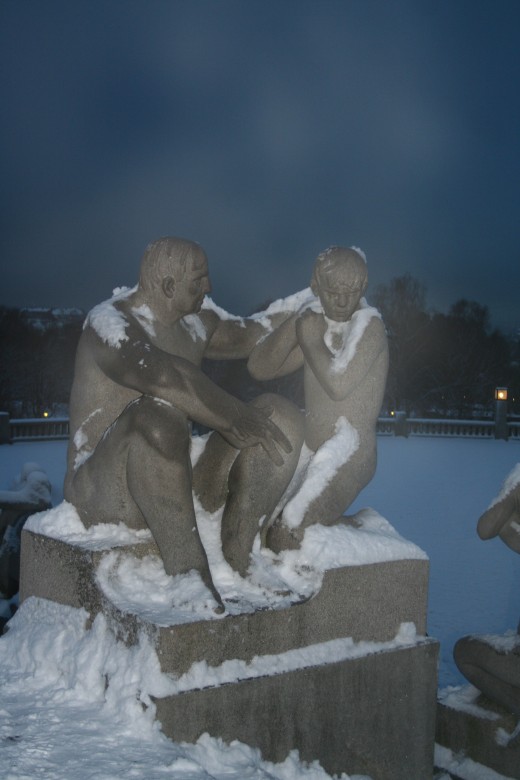
The Fountain, originally planned for the Parliament building, uses a ring of statuary trees with people among and within them. The artist uses children, youths, adults and skeletons to show that life not only comes from life, but that the relationship of one generation to another is as intertwined as it is linear. The artist's playful imagery is at work, as figures are partly or entirely inside or outside the trees.
The high point of the sculpture garden, both literally and metaphorically, is the fifteen foot monolith (closer to 20 with plinth), which took three stone carvers fourteen years to recreate from Vigeland's plaster model. With 121 intertwined bodies reaching toward heaven, the piece suggests a migration toward afterlife.
Vigeland's statues, for which he did not use models, are so detailed that visitors can trace the outlines of veins with their fingers.
At the far west end of the sculpture walk a human wreath symbolizing hope and eternal life brings a logical conclusion to the exhibition of the artist's life's work.
Vigeland and prosperity benefited from the foresight of Oslo's municipal officials at the turn of the twentieth century, when they gave the sculptor permission to use a dilapidated museum. When time came to demolish the studio, Vigeland arranged with the officials to build a new studio for him, with living quarters above. In return, he gave them the rights to his designs, sculptures and other art. The studio is now the Vogeland Museum and his ashes reside in the apartments above.
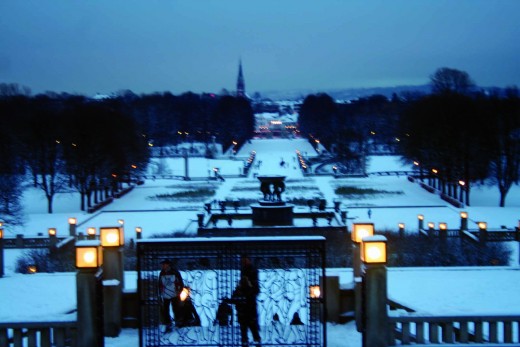
We visited Vigeland Sculpture Park almost as an afterthought in the late afternoon. It was serene and graceful, but I hope to return in warm weather and full sunlight to enjoy the beauty created by one man by the grace of foresighted city officials.
